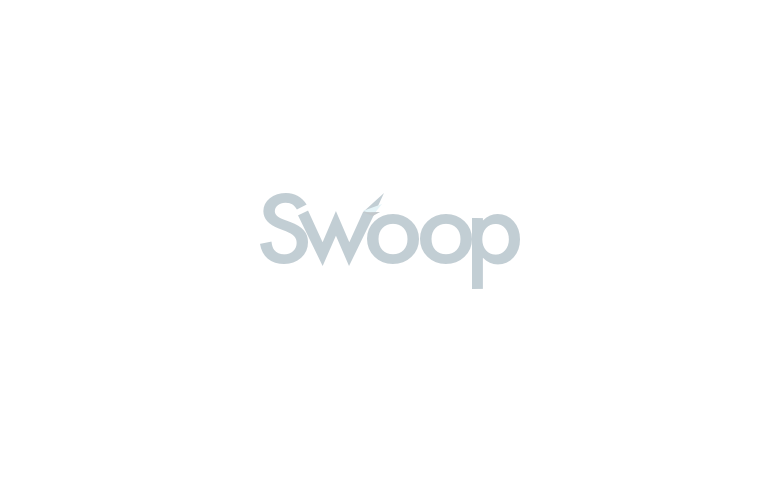TABLE OF CONTENTS
A revolving credit facility is a rolling line of credit arranged between a business and a lender. Unlike a fixed business loan you can access funds on an as-needed basis and repay when it’s convenient.
Page written by Arabella McAvoy. Last reviewed on October 3, 2024. Next review due April 1, 2026.

A revolving credit facility (line of credit) is a type of working capital finance that enables businesses to quickly draw down or withdraw funds, repay, and withdraw again. You have a credit limit, just as you would with a business credit card or bank overdraft.
It’s popular among businesses that need to boost their working capital, so you might use it for short-term financing that you plan to pay off quickly.
A revolving credit line is a bit like a flexible, open-ended loan. You can borrow money, pay it back, borrow some more, and so on, for the agreed duration of the term. In other words, once you’ve repaid whatever you’ve used, you can withdraw more – hence the term ‘revolving’. The lender tells you the maximum amount you can spend (your credit limit) and you then have the freedom to decide how much you borrow and pay back each month.
You can think of revolving credit facilities as a type of loan that can be automatically renewed.
Once you’ve an agreement in place with a lender (who may charge a small commitment fee), you won’t pay anything until you actually start tapping into the line. You can make withdrawals whenever you need additional funding. Similarly you can make repayments whenever you want to. You might use the facility regularly or you might just dip into one once or twice.
You pay a fixed interest rate, usually daily, only on the amount you’ve drawn down, not the entire credit line. This means your payments will probably be irregular because you’re not borrowing a lump sum of money and being charged interest right away. Your payment terms will specify how quickly you need to make repayments after withdrawing funds.
This is in contrast to a fixed business loan, which gives you access to funds for a specific amount of time (i.e. the term) – and you repay the loan (principal and interest) according to a fixed repayment schedule.
Your credit limit (i.e. the maximum you can withdraw) is usually the equivalent of one month’s turnover for your business. If you make regular, consistent payments on your revolving credit account, your lender might agree to increase your credit limit.
Lenders typically offer terms between six months and two years, but if you’re a reliable customer, a lender will typically offer a renewal at the end of the term.
With a revolving credit facility many lenders charge daily interest only on the amount you borrow (draw down) and, after the initial set up fee, you won’t pay anything until you actually start using the facility. It’s therefore a more flexible option compared to a fixed loan where you’d pay back principal and interest over a fixed term according to an agreed repayment schedule.
Although interest rates for revolving credit facilities are generally higher than those for fixed business loans, a revolving credit facility can work out cheaper in real terms than a fixed loan, because you’re not being lent a lump sum of money and charged interest right away on the full amount and for the agreed duration. If you use a revolving credit facility correctly, for example to cover specific cash flow gaps for a couple of weeks, you’ll only pay interest only for those weeks, rather than for the agreed duration of the agreement. In other words, you only pay for what you use.
Terms for revolving credit facilities are typically between six months and two years – in other words short-term borrowing compared to many fixed business loans, though you may have the option to extend.
Compared to some fixed business loans, approval rates for revolving credit facilities are quick (within hours) and you can draw down immediately.
With a revolving credit facility, you don’t have to set up a new agreement each time you make a withdrawal, which is helpful if your business needs to borrow small amounts regularly, rather than a larger amount for a specific project.
If you take out a revolving credit facility you won’t usually get a payment card. This is one of the main differences between a revolving credit facility and a business credit card. What this means is that if (for example) you want to buy stock you won’t use a credit card – instead, the funds will be transferred into your business bank account. In this sense, a revolving credit facility is more like a cash advance.
Most revolving credit facilities have significantly lower interest rates compared to business credit cards (though some facilities come with a card as part of the deal).
You’ll always have a credit limit with a revolving credit facility or a business credit card, just as you would with a bank overdraft.
In theory, you can borrow up to 100% of the value of the asset(s) you’re using as security. These assets are usually commercial property, equipment or land. Some lenders will consider a net value of multiple assets including, for example, your personal assets such as your residential property, car or shares.
In practice, requests are typically 50-70% of the value of the asset(s). So, depending on the value of your asset(s) you could access a secured business loan from $5,000 to $5m.

A word from Andrea
"A revolving credit facility (line of credit) is a type of working capital finance that enables you to quickly withdraw money when you need it to fund your business, with the benefit of being able to repay it whenever you want to. This is different to a fixed business loan, which gives you access to funds for a pre-agreed term and you repay the loan according to a fixed repayment schedule. If you commit to making regular, consistent payments on your revolving credit account, your lender may agree to increase your credit limit, releasing more funds."
Like an overdraft, a revolving credit facility isn’t a static (fixed) business loan. In both cases you can access pre-approved funds when you need to, and you pay interest on the amount you withdraw, while it’s outstanding.
Essentially, a business overdraft is a line of credit that you arrange with your bank to a set amount. It allows you to withdraw money from your account even when the balance is zero. If you go over your limit you incur a fee and you pay interest on the balance.
You’re probably more likely to get a revolving credit facility from an alternative lender than you are from your bank. You can withdraw up to a pre-arranged amount (i.e. your credit limit) and you repay the outstanding balance (plus interest for the days you’ve drawn down the funds) so that you can borrow again and again throughout the duration of your facility.
Revolving credit facilities are a popular alternative to overdrafts, which are harder to come by these days.
Whether you need quick cash to pay for unforeseen expenses or expansion, or you want to make a series of smaller purchases, there are several reasons why you might choose a revolving credit facility to solve your short-term cash-flow issues.
Our comparisons with fixed business loans, credit cards and overdrafts are set out above.
Here’s a more general list of pros:
These aren’t necessarily cons but rather things to be aware of if you’re considering a revolving credit facility as a finance option:
Let’s say Seagull Ltd has taken out a revolving credit facility with an agreed limit of $10,000. It pays an initial set up fee of 3%, i.e. $300.
The business needs access to cash to pay salaries while waiting for a customer to pay a large invoice. It draws down $5,000 and pays daily interest on this. After 30 days it repays the amount in full and is then able to access up to the full credit limit of $10,000 again.
Bear in mind that taking out a revolving credit facility doesn’t mean you have to use the maximum amount available – and you’ll pay interest only on the amount you draw down.
(Another option would have been to repay the $5000 in smaller amounts over a few months until the full amount is paid off).
See What can I use a revolving credit facility for? for other scenarios where businesses might benefit from a revolving credit facility.
Revolving credit facilities are almost always used for the short term. Terms are typically between six months and two years. That said, you might have the option to extend the facility, providing you keep up with the repayments. That’s for the lender to decide.
If you’re looking for longer-term debt you might also consider, for example:
You can also use revolving credit lines in combination with other types of finance, for example trade finance or supplier finance to help you manage supply chain funding.
Like loans, both revolving and non-revolving credit facilities come in secured and unsecured versions.
Security for a revolving credit line will usually take the form of a director’s personal guarantee.
Bear in mind that if you’re the person who’s offered the guarantee and your business fails to make repayments, you become personally liable for paying off the debt. You should seek professional advice before you consider signing a personal guarantee.
As you’d expect, you’ll pay lower interest rates if you offer security than you would for an unsecured facility.
A revolving credit facility (i.e. a ‘rolling’ line of credit) and a non-revolving credit facility have some things in common. They are both a bit like a business loan that’s ready to go. You have an agreement with a lender that lets you borrow on an as-needed basis, and pay back when it’s convenient. You have a credit limit in the same way that you would with a business credit card or bank overdraft.
You can withdraw funds for a variety of purposes, you pay interest, and you can make payments at any time, as documented in your agreement.
There’s one major difference: with a non-revolving credit facility the pool of available credit doesn’t replenish after you’ve completed your payments. Instead, once you pay off the line of credit in full, the lender closes the account and you can’t use it again. So, unlike revolving credit, a non-revolving line of credit is a static product – a one-off financial arrangement. When you’ve reached your credit limit, you can’t borrow more.
A revolving credit facility, on the other hand, allows you to make withdrawals whenever you need additional funding – similarly you can make repayments whenever you want to. You might use the facility regularly or you might just dip into one once or twice.
Revolving credit facilities tend to have much higher interest rates than fixed-term loans – you’re paying for their convenience and their flexibility. That said, if you use the facility correctly and draw down only for short periods of time, a revolving credit facility would work out less expensive in real terms than a fixed loan. This is because you pay interest only on what you draw down. See Revolving credit facilities vs. fixed business loans.
Interest rates for revolving credit facilities are significantly lower than rates for most business credit cards.
Like any borrowing, your interest rate will depend on the risk to the lender (i.e. your business circumstances). If you can offer security, typically in the form of a director’s personal guarantee, you’ll pay lower rates than you would for an unsecured facility.
In some cases, you’ll be asked to pay an upfront commitment fee for ‘right to access’ the facility. After that you’ll pay the standard daily or monthly interest on the funds you’ve drawn down.
This compensates the lender for keeping access to a potential loan open. The actual fee can either be a flat fee or a fixed percentage.
These fees are typically around 1% of the credit limit but will vary according to lender and length of commitment.
A revolving credit facility can give you flexibility to make purchases when you’re experiencing cash flow issues. You might need to make a large, one-off purchase, or you might have a series of smaller short-term cash flow issues to resolve.
Below are some examples of scenarios where you might benefit from a revolving credit facility:
While you’ll be offered better rates if your business has a good credit score, you might be able to get a revolving credit facility with an imperfect personal or business credit score. The lender is however likely to ask for additional financial information and, in some cases, a director’s personal guarantee as security for the finance. Bear in mind that if you’re the person who’s offered the guarantee and your business fails to make repayments, you become personally liable for paying off the debt. You should seek professional advice before you consider signing a personal guarantee.
As you’d expect, if your business doesn’t keep up repayments, this will negatively impact your business’s credit score.
Here are some things you can do to minimise the chances of your revolving credit facility negatively impacting your credit score:
Lenders will look at various aspects of your financial history, both business and personal, to build up a picture of the risk you pose to them.
What lenders really care about is the amount of cash regularly flowing into your business bank account. This means that if you’re after just a small facility, a lender might look only at your bank account – an advantage if you’re a new company (though you’ll need to have been trading for more than 3 months).
Revolving credit facilities are generally short-term arrangements, so if you’ve previously struggled to find credit, you might have more success with this type of product.
The amount a lender will offer (i.e. your credit limit) is usually equivalent to one month’s turnover for your business. If you’re a strong business or a repeat customer, you might be offered a larger credit limit after you’ve proved to be a responsible customer by making regular, consistent payments on your revolving credit account. In this sense it’s a dynamic product, compared to a non-revolving line of credit.
Lenders will initially offer a maximum facility size based on:
If you decide that a revolving credit facility isn’t right for you, you could consider invoice finance, which enables you to receive an advance on payments due to you. You could also consider a merchant cash advance if your business accepts payment via credit and debit cards.
If you need funding to improve cash flow or to purchase things such as machinery or vehicles for your business, you could look at asset finance or business loans.
Written by
Arabella is a former BBC business journalist who began her career as a policy analyst at the Bank of England and Financial Conduct Authority, and more recently worked in the communications and policy team at the British Business Bank.
Swoop promise
At Swoop we want to make it easy for SMEs to understand the sometimes overwhelming world of business finance and insurance. Our goal is simple – to distill complex topics, unravel jargon, offer transparent and impartial information, and empower businesses to make smart financial decisions with confidence.
Find out more about Swoop’s editorial principles by reading our editorial policy.
Related pages




Get your free Revolving credit facility quote today
Join the 110,000+ businesses just like yours getting the Swoop newsletter.
Free. No spam. Opt out whenever you like.
Kingfisher Way, Silverlink Business Park, Newcastle upon Tyne, NE28 9NX, UK
View in Google MapsAberystwyth Innovation and Enterprise Campus
Gogerddan Campus
Aberystwyth University
Ceredigion
SY23 3EE
Dogpatch Labs, The CHQ Building, Custom House Quay, Dublin, Ireland
View in Google MapsSuite 801, Level 8, 84 Pitt Street, Sydney, NSW 2000, Australia
View in Google Maps43 W 23rd St, New York, NY 10010, United States
View in Google Maps21 Dreyer Street, Cape Town, South Africa, 7708
View in Google Maps
Disclaimer: Swoop Finance Ltd (Swoop) helps Canadian firms access business finance, working directly with businesses and their trusted advisors. We are a credit broker and do not provide loans or other finance products ourselves. All finance and quotes are subject to status and income. Applicants must be aged 18 and over and terms and conditions apply. Guarantees and Indemnities may be required. Swoop can introduce applicants to a number of providers based on the applicants’ circumstances and creditworthiness. Swoop may receive a commission or finder’s fee for effecting such introductions. If you feel you have a complaint, please read our complaints section highlighted above and also contained within our terms and conditions.
Clever finance tips and the latest news
Delivered to your inbox monthly
Join the 110,000+ businesses just like yours getting the Swoop newsletter. Free. No spam. Opt out whenever you like.




